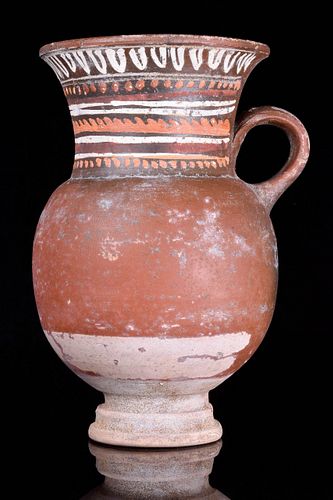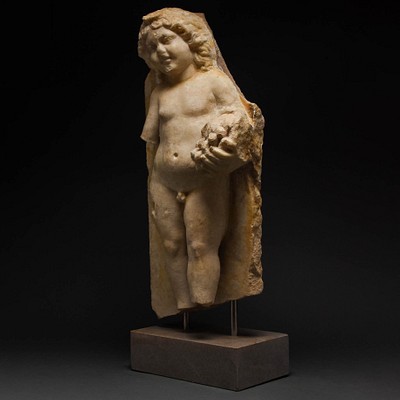ANCIENT GREEK GNATHIAN THISTLE MUG
Lot 30
Categories
Estimate:
GBP£400 - GBP£800
$540.54 - $1,081.08
Absentee vs Live bid
Two ways to bid:
- Leave a max absentee bid and the platform will bid on your behalf up to your maximum bid during the live auction.
- Bid live during the auction and your bids will be submitted real-time to the auctioneer.
Bid Increments
| Price | Bid Increment |
|---|---|
| GBP£0 | GBP£10 |
| GBP£100 | GBP£10 |
| GBP£200 | GBP£20 |
| GBP£500 | GBP£50 |
| GBP£1,000 | GBP£100 |
| GBP£2,000 | GBP£200 |
| GBP£5,000 | GBP£500 |
| GBP£10,000 | GBP£1,000 |
| GBP£20,000 | GBP£2,000 |
| GBP£50,000 | GBP£5,000 |
| GBP£100,000 | GBP£10,000 |
| GBP£200,000 | GBP£20,000 |
| GBP£1,000,000 | GBP£50,000 |
About Auction
By Apollo Art Auctions
Mar 27, 2022
Set Reminder
2022-03-27 08:00:00
2022-03-27 08:00:00
America/New_York
Bidsquare
Bidsquare : Ancient, Chinese and Islamic Art
https://www.bidsquare.com/auctions/apollo-art-auctions/ancient-chinese-and-islamic-art-8938
Apollo Galleries and Auctions is delighted to present a stunning March 2022 Ancient, Chinese and Islamic Art Auction. The sale is divided into four sections and features items from Christie’s, Bonham’s, Alison Barker, John Lee and other famous collections. Apollo Art Auctions enquiries@apolloauctions.com
Apollo Galleries and Auctions is delighted to present a stunning March 2022 Ancient, Chinese and Islamic Art Auction. The sale is divided into four sections and features items from Christie’s, Bonham’s, Alison Barker, John Lee and other famous collections. Apollo Art Auctions enquiries@apolloauctions.com
- Lot Description
Circa 370-325 BC A glazed wheel-thrown thistle mug with a petite tiered foot, a bulbous body that tapers to a wide neck, a flared rim, and an applied bifurcated ring handle. The body is detailed with white painted chevrons, above bands of applied white paint, red and yellow dotted design between highly stylised wave motif. The Gnathian style originated from Apulia, a region of Italy located along the southern coast. It consisted of a polychromic design applied onto a dark, varnished background. The primary colours used were red, white, and yellow although white soon became the dominant colour. The skyphos, a typical drinking cup in southern Italy, were used during drinking parties because of its practical shape. According to Plato, drinking parties were a common event which allowed guests to have discussions or articulate riddles. Romanelli, P., Corpus Vasorum Antiquorum, Italia 6, Lecce 2 (1979), IV Dr, Tavola 53, 1 (larger, but similar shape and decorative scheme), Tavola 56, 11-14 (small examples with female heads and palmettes). Trendall, A. D., Red Figure Vases of South Italy and Sicily: a Handbook, London, Thames and Hudson, 1989, 227, 2 and 4 (female heads on vases of the Darius-Underworld workshop). Size: L:125mm / W:85mm; 220g Provenance: Property of a central London Gallery; formerly in a South English estate collection; acquired in the 1990s from Andre de Munter, Brussels, Belgium; previously in an old European collection.
- Shipping Info
-
We offer in-house packing and international shipping at discounted rates.
-
- Buyer's Premium



 EUR
EUR CAD
CAD AUD
AUD GBP
GBP MXN
MXN HKD
HKD CNY
CNY MYR
MYR SEK
SEK SGD
SGD CHF
CHF THB
THB

















